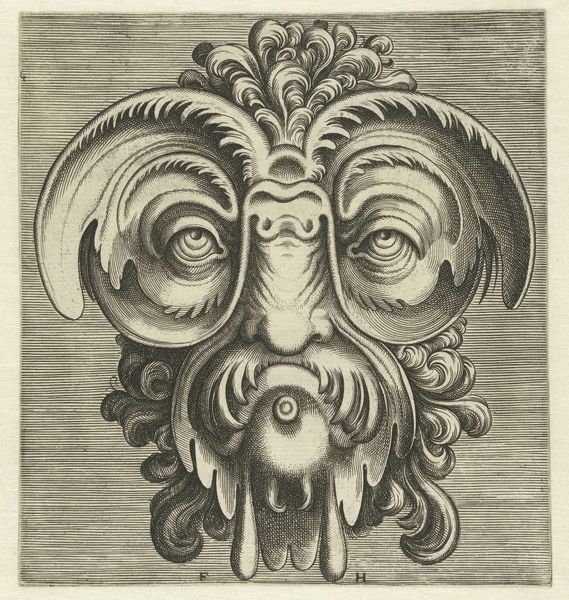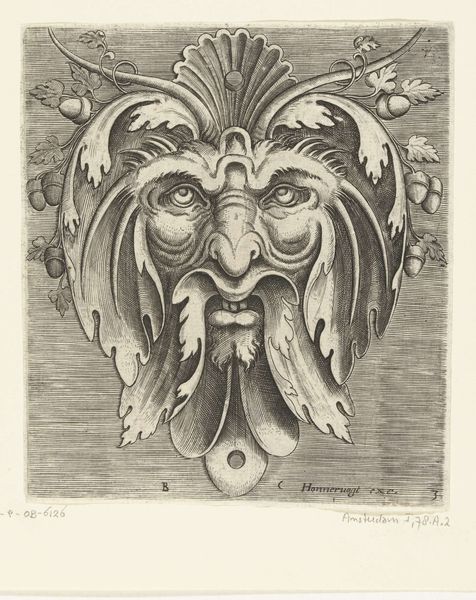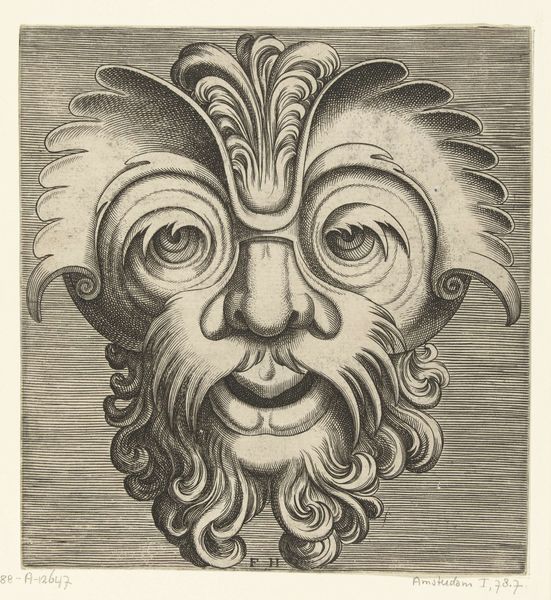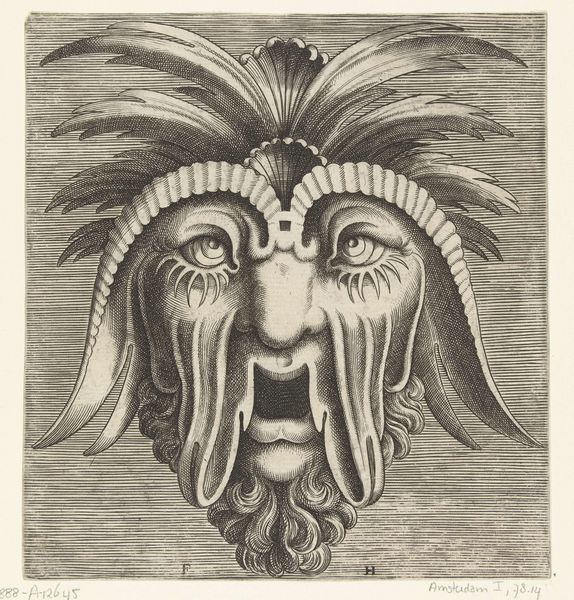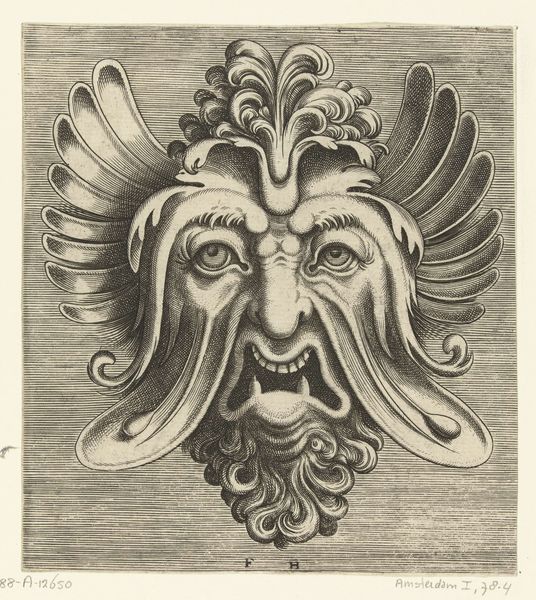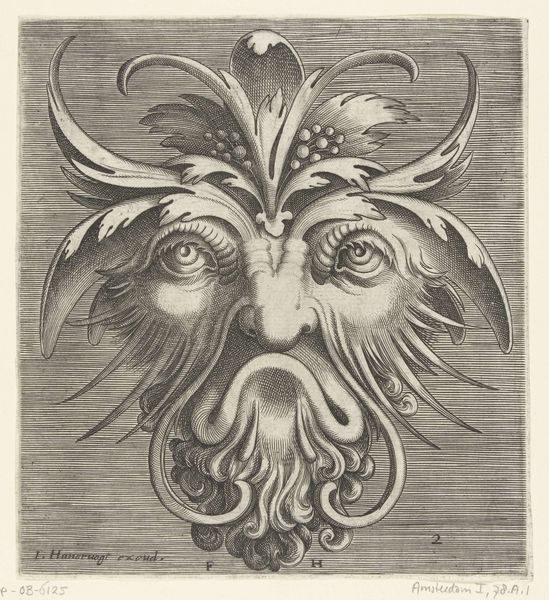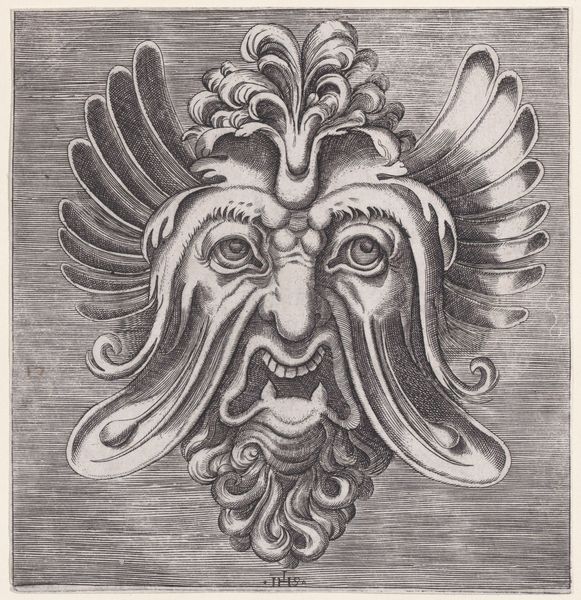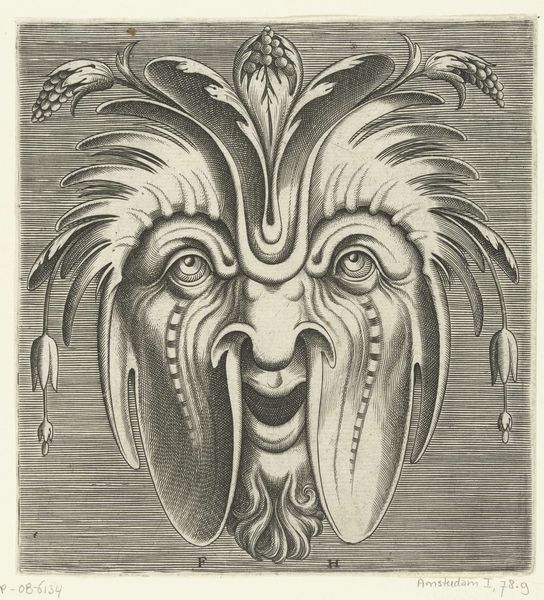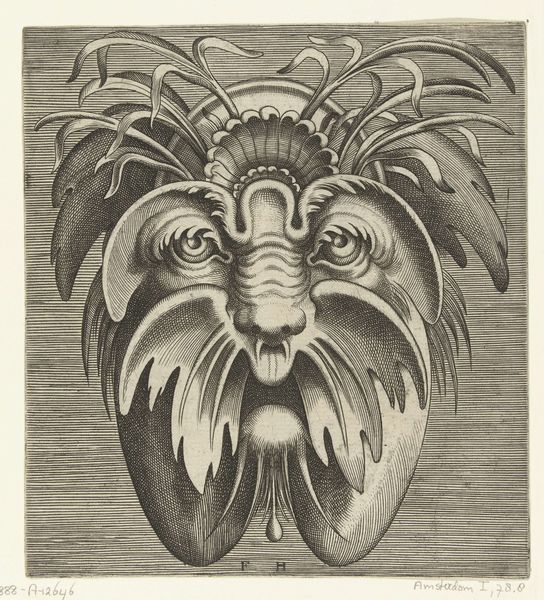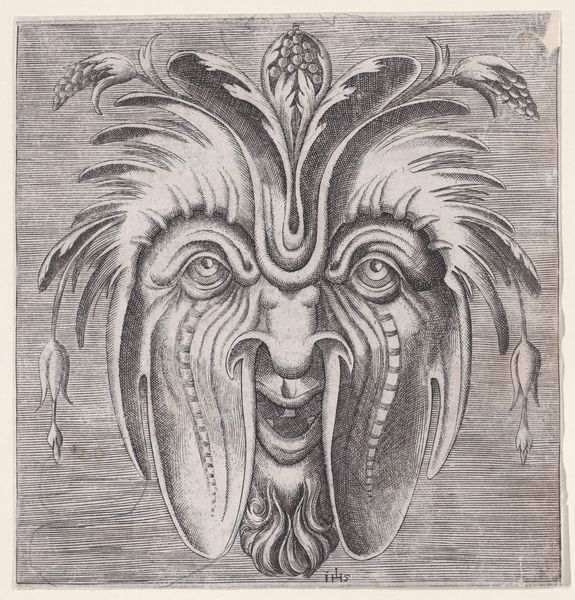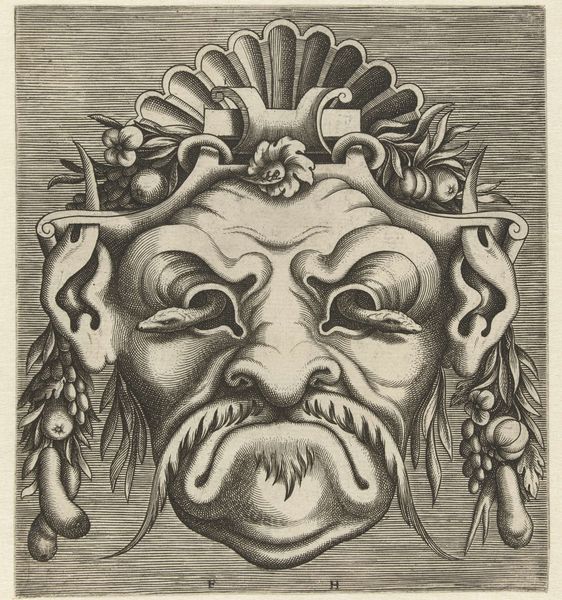
Masker met schelpvormige ogen en een schelp tussen vruchtentrossen op het voorhoofd 1555
0:00
0:00
print, engraving
#
allegory
# print
#
caricature
#
mannerism
#
form
#
11_renaissance
#
engraving
Dimensions: height 127 mm, width 109 mm
Copyright: Rijks Museum: Open Domain
Editor: This engraving, "Masker met schelpvormige ogen en een schelp tussen vruchtentrossen op het voorhoofd" from 1555 by Frans Huys, is quite striking! The textures are so meticulously rendered, and there's this bizarre yet compelling tension between the organic and the artificial. What compositional elements do you find most compelling? Curator: Indeed. Let's observe the meticulousness of line employed to define form. The parallel hatching creates a sense of volume and depth, wouldn't you agree? Note how the rigid lines in the background contrast with the organic shapes. What effect does that juxtaposition create for you? Editor: It emphasizes the mask's artificiality, perhaps? The fruits and shells feel like applied ornamentation, not inherent parts of a natural face. Curator: Precisely! It’s a demonstration of artifice, a clear construction. Now, consider the symbolism: shells often represent pilgrimage, fruits suggest abundance. How do these motifs interplay with the grotesque nature of the mask itself? Editor: Maybe it is playing with contrasts, that things are not always as abundant or pious as they might appear? It’s as though Huys is hinting at something beneath the surface. Curator: The piece seems to embrace dissonance, the grotesque, and artificiality to explore deeper concepts about the era. Do you agree with the use of Mannerism categorization in this work? Editor: Well, its distortion of natural forms, favoring elegance and imagination over realistic representation does seem typical for the period. Curator: I concur. By exploring only the structural elements, we gained insight to better appreciate its historical and cultural context. Editor: I see how attending to form helped to unlock greater symbolic meaning in the art. Thanks.
Comments
No comments
Be the first to comment and join the conversation on the ultimate creative platform.

